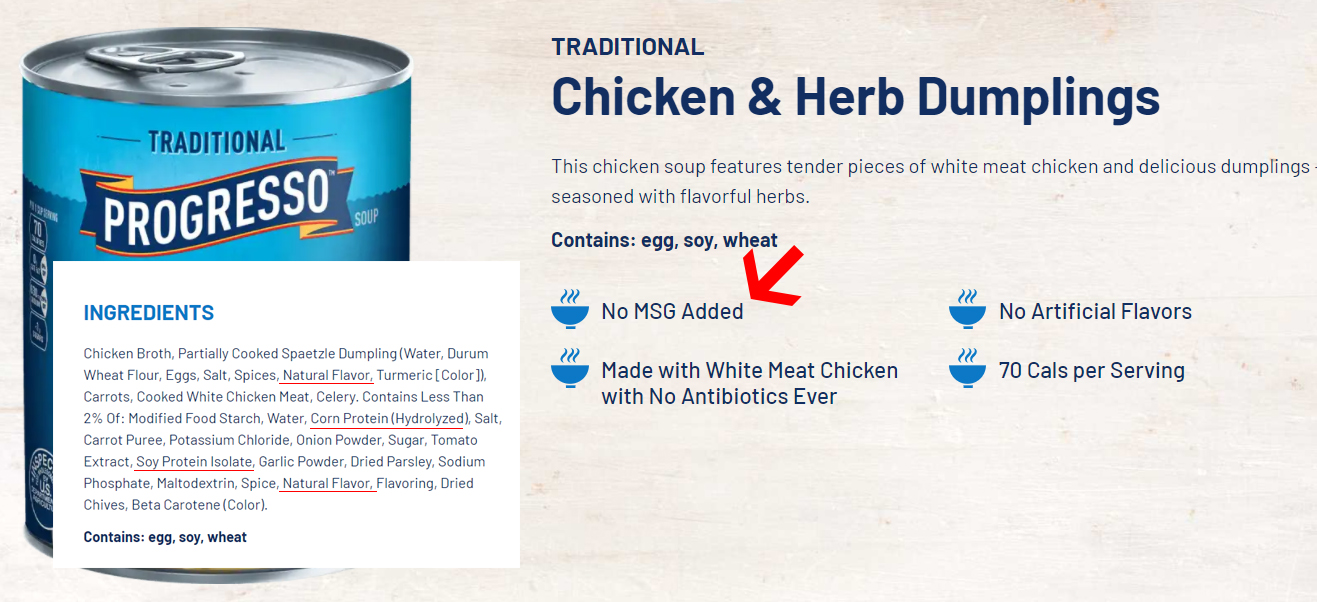Glutamic acid (glutamate) is a building block of protein. When present in protein or released from protein in a regulated fashion, glutamate is vital to normal body function. It is the major neurotransmitter in the human body, carrying nerve impulses from glutamate stimuli to glutamate receptors throughout the body. Yet when present outside of protein in amounts that exceed what the healthy human body was designed to accommodate (when present in excess), glutamate takes on excitotoxic properties, becoming an excitotoxic neurotransmitter, firing repeatedly, damaging targeted glutamate-receptors and/or causing neuronal and non-neuronal death by over exciting glutamate receptors until their cells die.
Excitotoxicity of L-glutamic acid (glutamate) was first demonstrated in 1969. On April 3, 2019, a PubMed search for “glutamate” produced 157,021 references. Topics being researched included, but were not limited to, glutamate receptors, transport, excitotoxicity, release, transporter, brain, synthesis, monosodium glutamate, Parkinson’s disease, multiple sclerosis, Alzheimer’s disease, stroke, ALS, autism, schizophrenia, depression, obsessive-compulsive disorder (OCD), epilepsy, ischemic stroke, seizures, Huntington’s disease, addiction, attention-deficit/hyperactivity disorder (ADHD), and autism.
Much, if not all of that research dealt with excitotoxicity caused by glutamate from endogenous1 sources. The contribution of glutamate from exogenous2 sources to endogenous glutamate pools through which excitotoxicity would be triggered, seems never to have been considered.
Overlooked also, is a wealth of knowledge that could be gleaned from the histories of humans who have suffered brain damage, endocrine disorders, and observable adverse reactions following intake of excitotoxic glutamate from exogenous sources.
With the following we present an overview of what we know, or think we know, about the function of glutamate in persons who have experienced reactions to it. It is our hope that insights generated by this information may be used by researchers probing the mechanisms of glutamate toxicity, and by the medical professionals working with people who react to the excitotoxic effects of Manufactured free Glutamate.
Vulnerability
Everyone is vulnerable to the toxicity of excitotoxins if they get a heavy enough dose of them. There are no exceptions. To be toxic, an excitotoxin must either target receptors that have become weakened or vulnerable to their attack, or be in such strong concentrations that no glutamate receptor can resist them.
Vulnerability may be created by:
- An inadequate BBB — allowing brain cells to be unprotected by a blood-brain barrier (BBB);
- A damaged BBB;
- Preexisting brain damage, possibly from a stroke, a blow to the head, or previously consuming a large quantity of Manufactured free glutamate at one sitting, and
- Preexisting damage done to cells that host glutamate receptors in either the central nervous system or in peripheral tissue.
We know very little about the actions of excitotoxins. Glutamate loads on (triggers) glutamate receptors both in the central nervous system and in peripheral tissue (heart, lungs, and intestines, for example). When loading on (stimulating) a glutamate receptor, glutamate may simply stimulate receptors and then fade, so to speak; may damage the cells that those receptors cling to; or may stimulate those receptors (over-excite those receptors) until the cells that host them die.
There’s another possibility. There are a great many glutamate receptors in the brain. It is possible that if a few are damaged or wiped out following ingestion of Manufactured free glutamate, their loss may not be noticed because there would be many undamaged glutamate receptors remaining. It is also possible that individuals differ in the numbers of glutamate receptors that they have to begin with; that people with more glutamate receptors are less likely to demonstrate brain damage following ingestion of Manufactured free glutamate because even after some cells are killed or damaged, there are still sufficient undamaged cells to carry out normal functions.
Saying it another way, people with fewer receptors to begin with might be more likely to demonstrate brain damage following ingestion of MSG or MfG because they have fewer glutamate receptors remaining after excitotoxic insult than individuals who had more glutamate receptors to begin with. That might account for some people being more sensitive to Manufactured free glutamate than others.
Less is known about glutamate receptors outside the brain – in the heart, stomach, and lungs, for example. But it would be anticipated that in each location there would be fewer glutamate receptors siting on host cells than found in the brain; and for some individuals, there might be so few cells with glutamate receptors to begin with, that ingestion of even small amounts of Manufactured free glutamate might trigger asthma, atrial fibrillation, or irritable bowel, for example; while individuals with more cells hosting glutamate receptors to begin with, would not notice the loss of a relatively few cells.
Short-term effects of excitotoxic glutamate (effects like asthma and migraine headache) have long been obvious to all who are not swayed by the rhetoric of the glutamate industry and their friends, including friends at the U.S. Food and Drug Administration (FDA). Researchers may only now begin to correlate the adverse effects of glutamate ingestion with endocrine disturbances such as reproductive disorders and gross obesity, with some psychological disorders, and with neurodegenerative disease. And a few have begun to realize the importance of glutamate’s access to the human body through the mouth, through the nose, and through the skin.
Excess
Glutamate is a non-essential amino acid, meaning that there is no need for a human to ingest glutamate as the body will produce what it needs from other available amino acids.
A reaction to glutamate, is a reaction to excess free glutamate. Because of differences in vulnerability, what is an excess for one will not necessarily be excess for another. While excess might ordinarily be defined as “more than is needed for normal body function,” that doesn’t seem to be the case with glutamate-sensitivity. Rather, excess seems to be related to the amount of glutamate that will damage or kill a given subject’s glutamate receptors.
Excess may be created by:
- Eating enough Manufactured free glutamate at one sitting to trigger glutamate receptors on vulnerable cells;
- Eating enough Manufactured free glutamate to trigger glutamate receptors on cells that had not previously been damaged or made vulnerable, and
- Adding ingested Manufactured free glutamate to stores of glutamate in the body.
Manufactured free glutamate will be found in infant formula, protein powders, protein drinks, processed food, enteral care products, cosmetics, pharmaceuticals, and dietary supplements. There is more than sufficient Manufactured free glutamate in processed foods to cause reactions in people who choose not to limit their access to Manufactured free glutamate.
Data on availability will be found in grocery stores. Access a list of ingredients that contain Manufactured free glutamate (https://www.truthinlabeling.org/names.html), then look for products that don’t contain them. You won’t find 10 products that don’t contain at least one of the ingredients on that list, and every one of them contains Manufactured free glutamate. Consider how many of those Manufactured free glutamate containing products are in the meals and snacks enjoyed by people everywhere. Include restaurant foods in that tally.
Glutamate receptors
Glutamate receptors receive the glutamate sent to them by glutamate neurotransmitters. Although glutamate is essential to normal body function, when present in excess outside of intact protein it becomes excitotoxic, firing repeatedly and causing cell death and/or damage to targeted cells.
If cells are protected from excess glutamate, as the brain may be protected at least in part by a robust BBB, a little excess glutamate sent their way may not harm them. But if the BBB is ineffective, targeted cells die. Outside of the brain and central nervous system, glutamate-receptors may have no protective shield from excitotoxins at all.
Relatively recently, researchers discovered glutamate-receptors beyond the brain and central nervous system. These include, but are not limited to peripheral receptors in the stomach, heart, lungs, kidney, liver, immune system, spleen, and testis. And cells associated with each may be damaged or killed if glutamate sent from glutamate neurotransmitters reaches them. It’s possible that these peripheral receptors may have some type of protection system, but if so, scientists have not yet identified it.
Years ago, it was thought to be remarkable that glutamate-toxicity worked through the brain, since glutamate could produce an immediate migraine headache. Glutamate eaten – brain triggered – headache happened within seconds. Today it is understood that glutamate can move directly to peripheral receptors without traveling through the brain.
It appears that cells that host glutamate receptors can be damaged if exposed to a little glutamate, but not enough to kill them outright. There might be times when one ingests enough Manufactured free glutamate to damage a cell, but not enough to kill it, or damage some of the cells in a group that control a particular function but not enough to knock out all of them. Ingest more glutamate on a second occasion, however, and those cells may die. Some Manufactured free glutamate sensitive people report that they can knowingly ingest Manufactured free glutamate in a favorite food on one occasion without noticing a reaction, but visibly react when that same food is consumed several days in a row.
What would increase glutamate receptor vulnerability?
Damage to the BBB would be the most obvious factor. It is known that lack of blood-brain barrier development in the fetus and infant make them extremely vulnerable to exposure to Manufactured free glutamate passed through their mothers’ diets.
Damage done to the BBBs of mature humans through use of drugs, from seizures, stroke, head trauma, hypoglycemia, hypertension, extreme physical stress, high fever, and the normal process of aging, can render them more vulnerable than others.
Individual sensitivity may also be related to the integrity of cells or groups of cells that control a particular function. A person who has experienced heart problems might very well be predisposed to experiencing cardiac-related reactions by virtue of having glutamate receptors in the heart vulnerable to insult by glutamate. A person with asthma, is likely predisposed to having an asthma attack after consuming free glutamate.
Reports from consumers tell us that intensity or severity of reactions appear to be affected by alcohol ingestion and/or exercise just prior to, or immediately following MSG ingestion, and some women report variations in their reactions at different times in their menstrual cycles.
Summary/conclusion
We have presented an overview of glutamate excitotoxicity gleaned in large part from persons who have experienced reactions to it. This is information not generally considered by those researching abnormalities associate with glutamate. Hopefully, insights generated by this information will be used by researchers probing the mechanisms of glutamate toxicity and by medical professionals working with people who react to the excitotoxic effects of Manufactured free glutamate.
1 growing or originating from within an organism.
2 originating from outside an organism.










